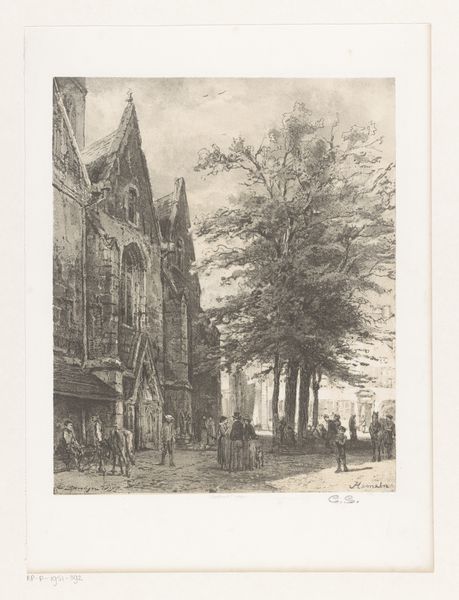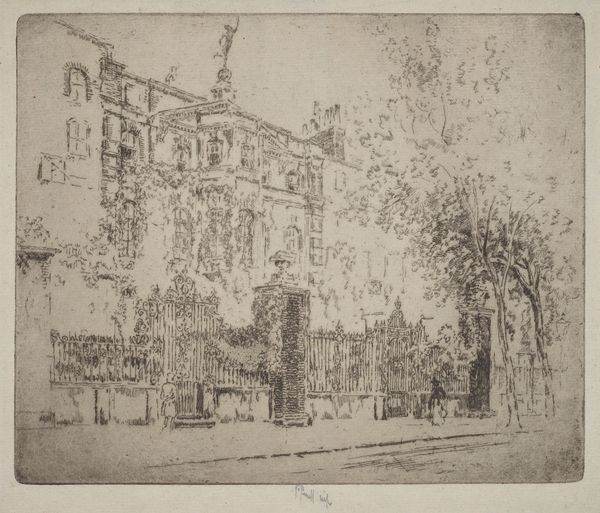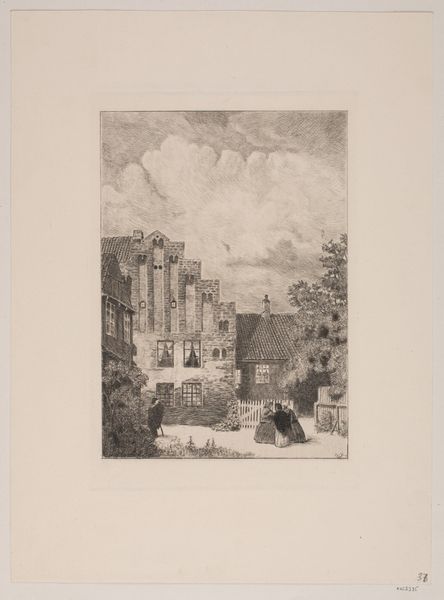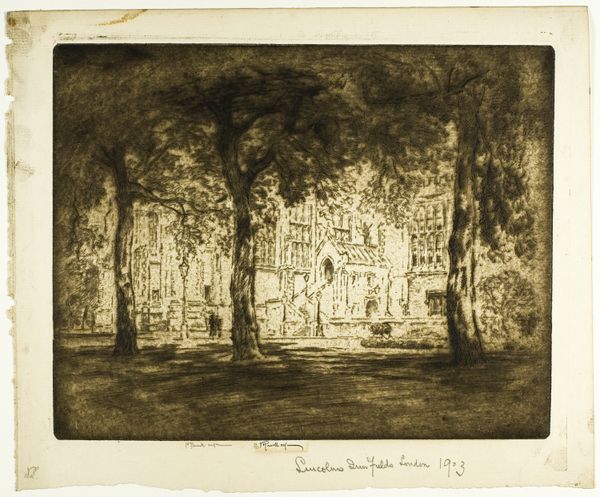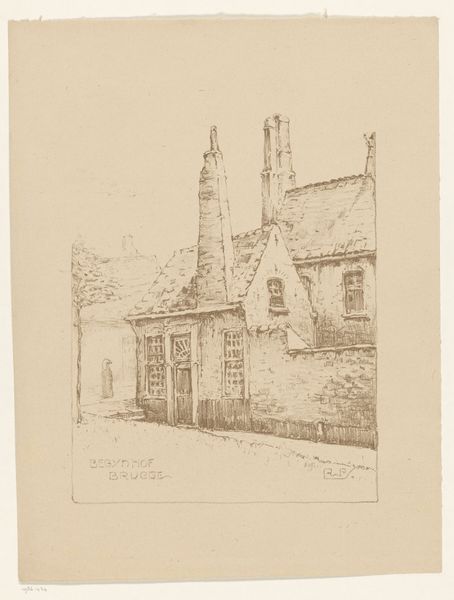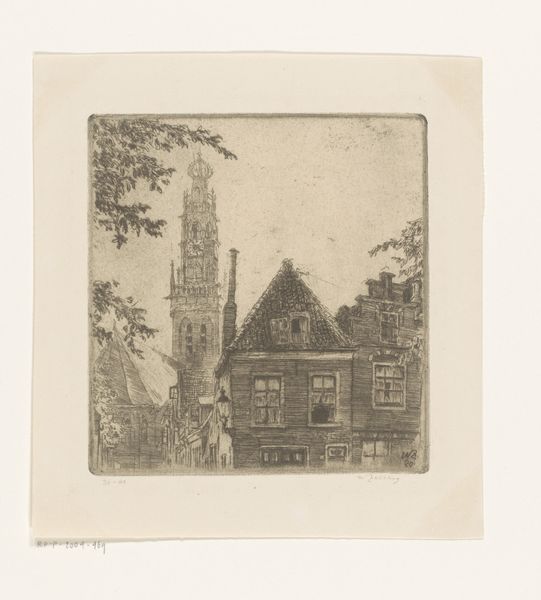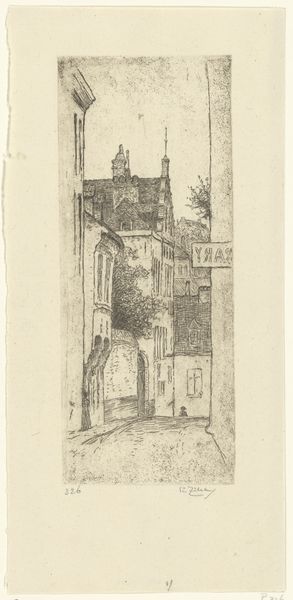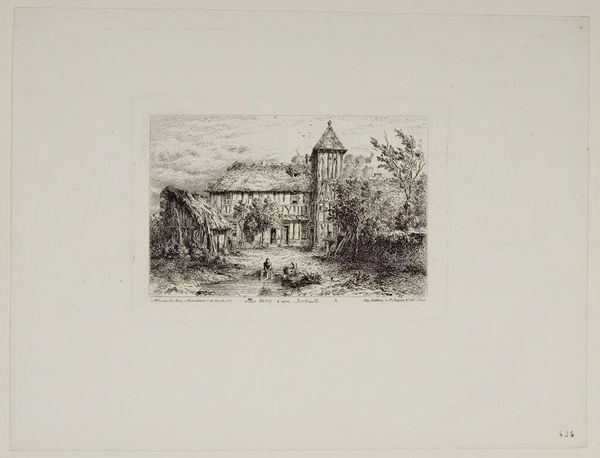
drawing, lithograph, print, paper, ink, pencil
#
drawing
#
ink drawing
#
lithograph
# print
#
pen sketch
#
arts-&-crafts-movement
#
pencil sketch
#
landscape
#
paper
#
ink
#
pencil
#
cityscape
Dimensions: 206 × 168 mm (image); 290 × 230 mm (sheet)
Copyright: Public Domain
Curator: Here we have Thomas Robert Way’s "Holland House," a lithograph from 1898. I’m curious about your initial impressions? Editor: A little ghostly, isn’t it? All those fine lines seem to conjure a place out of memory, like a half-remembered dream of a grand estate. Curator: Absolutely. There's a deliberate nostalgia in the image, fitting given its creation during the height of the Arts and Crafts movement. Note the careful attention to detail in the architecture. Way seems fascinated by the texture of the stone and foliage. It's all quite meticulous. Editor: It reads as a sanctuary, even if a somewhat somber one. Gardens, of course, have always been charged spaces. They symbolize both Eden and our control over nature. This feels particularly poignant given the looming architecture—a clear statement of human presence, coexisting rather harmoniously, at first glance. Curator: "Coexisting" is the operative word. These houses are never *just* houses. They’re symbols of power, privilege, legacy... even decay. Think of the trees framing the building – almost clawing their way into the structure. They’re a reminder that nature will eventually reclaim what’s hers, or perhaps it implies the interconnectedness between them. Editor: Those trees are rendered with a delicacy that is almost spiritual; the thin black ink forming the branches reads like veins, or perhaps neural pathways of a massive, living being. They bring a symbolic weight – a history rooted as deeply as those very trees are. Curator: Do you think there’s a commentary here on the rise of industrialization, which the Arts and Crafts movement rebelled against? This lithograph does champion a return to traditional methods and celebrates nature in the face of urban expansion, after all. Editor: Absolutely, it feels like a plea. "Remember the beauty," Way seems to be saying. Look closely— he doesn’t just render nature but elevates it almost above the architecture. It makes one wonder: which will endure longer? Curator: It all resonates even more poignantly, knowing how much London changed in the 20th century. Holland House was partly destroyed during WWII – now a fragmented, preserved ruin. Perhaps this image, beyond its celebration of nature, captured something inherently impermanent from the very beginning. Editor: Yes, this print invites us to contemplate cycles of growth and decay and the ever-present dialogue between the made and the natural world. It's more than just a pretty picture of a stately home; it's a meditation on time itself.
Comments
No comments
Be the first to comment and join the conversation on the ultimate creative platform.

